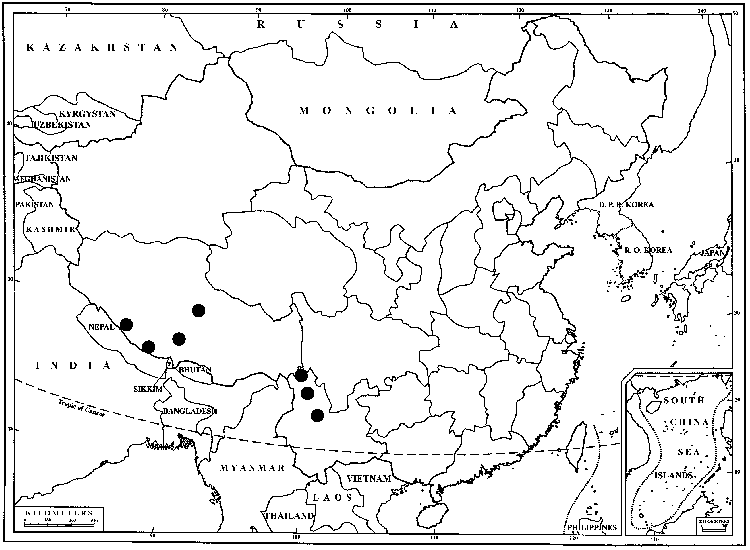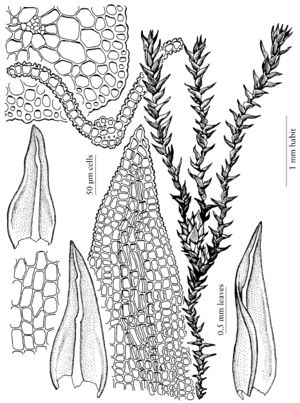Difference between revisions of "Bellibarbula recurva"
Bull. Buffalo Soc. Nat. Sci. 32: 142. 1993,.
FNA>Volume Importer |
FNA>Volume Importer |
(No difference)
| |
Revision as of 19:41, 24 September 2019
Stems occasionally branched in robust specimens, often exposed between subdistant leaf bases; rhizoids few at stem base. Leaves somewhat remote on stem, 0.8–1.5(–2) mm; margin variously broadly channeled to strongly or weakly recurved in proximal 3/4; apex flat or some leaves somewhat keeled, often ending in a single pellucid cell, some apices occasionally flexed sideways with the sinuose costa; costa sinuose beyond leaf middle, rather thick, papillose on both surfaces; laminal cells 10–13 µm wide, sharply papillose. Perigonia gemmate, at the tips of stems or terminating innovations in series along a developing stem, leaves larger than stem leaves, broadly ovate-lanceolate and clasping the antheridia. Perichaetiate plants and sporophytes not known in area of the flora.
Habitat: Thin soil over moist rock in protected mountain stations, forested gorges, coves, cliffs, along streams and by waterfalls
Elevation: moderate elevations (600-900 m)
Distribution

N.C., S.C., Mexico, South America (Bolivia), Asia (the Himalayas, s India).
Discussion
In the flora area Bellibarbula recurva is known only from four counties in western North Carolina, and one station in western South Carolina. One specimen examined was perigoniate; all remaining material seen was sterile. The characters that distinguish this species are the sinuous distal costa, the nearly quadrate basal cells, and the red laminal coloration. Bryoerythrophyllum ferruginascens, another species rare in the flora area and known from the Appalachians, is very similar but differs by its more elongate basal cells, propagula on the rhizoids and costa straight throughout. Didymodon vinealis, a species or species group with an almost entirely western distribution, is separated by its straight costa and a deep apical groove to the apex within which lies an epapillose costal surface with elongate cells; Bellibarbula recurva has a flattened apex with quadrate, papillose cells on the costal ventral surface.
Selected References
None.
